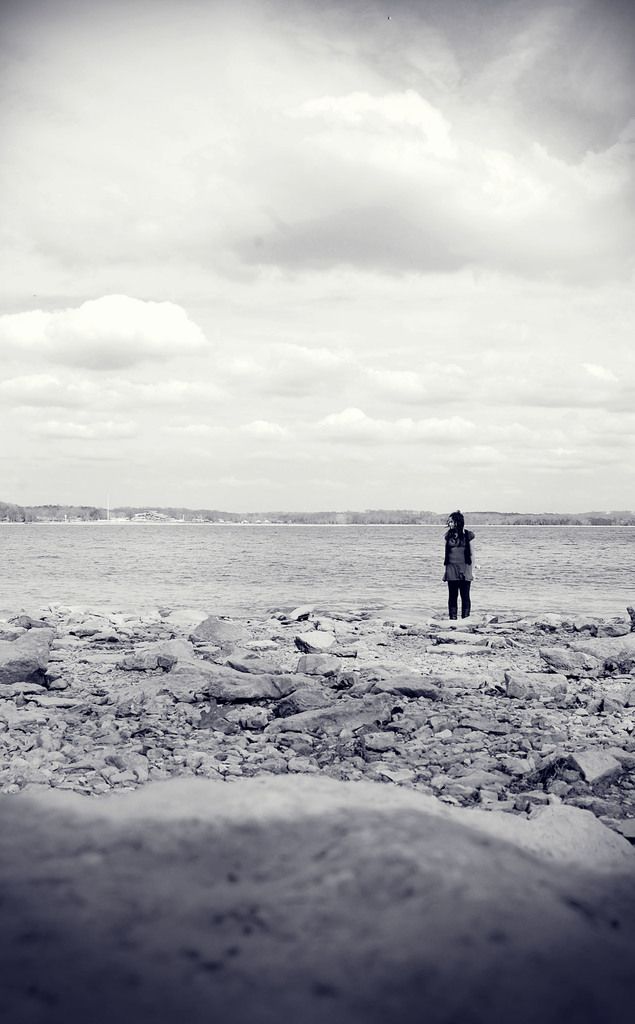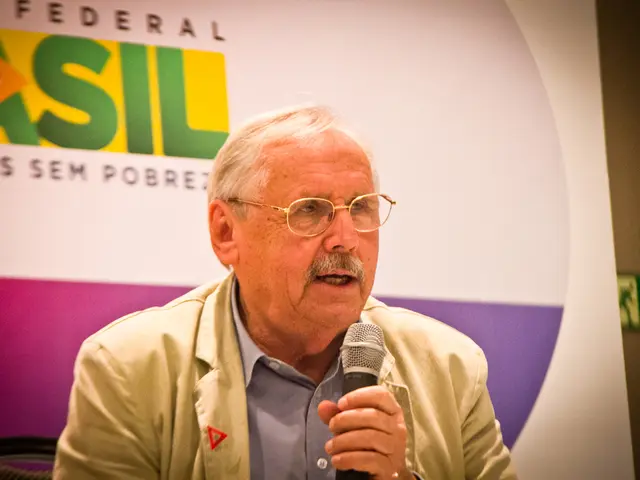Transforming Urban Spaces: Safaa Charafi's Approach to Equitable and Green Urban Development, Incorporating Intersectionality Perspective
Cities ain't for everyone. Their layouts, policies, and the attitudes of inhabitants scream a male-dominated perspective, and it's high time we change that.
Take a look at roads or public bathrooms—they're designed with men in mind, disregarding women's unique needs. These disparities fester throughout our cities, hidden until we delve deep.
It's tough to break the cycle of male planning, but we need people like Safaa Charafi. Based in Brussels, Belgium, Safaa is a gender consultant who focuses on the impact of diversity in urban planning and development through her firm, Urban Inclusion.
Safaa is all about equal access to safe and welcoming urban spaces, regardless of a person's economic status, migration status, race, gender, ability, or any other identity. Her passion stems from her personal experiences of growing up in a patriarchal society in Casablanca.
Gentrification to Gender Equality
Initially, Safaa pursued architecture but found herself collaborating with a large corporate investment institution. But when she realized her profession was contributing to regional gentrification, she knew it was time for a change. She enrolled in the human-centered 4Cities master's degree.
During her time there, Safaa saw familiar issues and emerging solutions at work in regions such as the Balkans and Scandinavia. Lefebvre's concept of the right to the city resonated with her personal challenges and shaped her vision of inclusive urban planning.
However, Safaa points out that there's still a long way to go. For example, public sports fields are predominantly used by men and boys due to overlooked gendered issues like body image, menstruation, and emotional health. And those aren't the only problems.
Safaa explains that city officials often find understanding intersectionality "too theoretical or too complex" to incorporate. So, as a gender consultant, she helps her clients identify ways to be more inclusive and equitable.
Engage Everyone
To make cities truly inclusive, it's essential to involve people from all backgrounds. But it's not just about representation. It necessitates a concerted effort to address the power imbalance and design inclusion into policies and programs.
Here's what Safaa suggests to ensure diverse voices are heard:
- Seek the most widespread and diverse representation possible, although complete representation is unrealistic.2.CREATE meaningfully inclusive spaces by hosting small group discussions and providing written or online options for remote participation.
- Ensure physical accessibility, offering translation services, childcare options, varied meeting schedules, and a safe and inclusive environment for the LGBTQ+ community.4.ACCOMMODATE the needs of neurodivergent individuals by providing quiet spaces and sensory-friendly environments.
Citizens' Assembly
One effective approach is a citizens' assembly. By selecting participants at random, it guarantees a diverse group representing various nationalities, languages, ages, education levels, and socioeconomic backgrounds. The group meets to brainstorm creative solutions, resulting in proposals submitted to the city council or even parliament.
This strategy empowers participants, incentivizing them to make a difference in their communities. And don't worry about convincing people to participate; they're paid for it!
Take the Easy Option
Remember, simple solutions can be effective and appealing to city leadership. For example, enhancing street lighting or building more female and gender-neutral toilets can significantly improve safety for women.
Gender Budgeting
Gender budgeting can also help mainstream intersectionality. It involves analyzing government budgets to identify and rectify inequalities, then allocating spending more efficiently to meet the needs of marginalized groups. The goal isn’t to create separate funds for different sexes, but rather to improve existing facilities for everyone.
Commit to Change...and Change Again
Planners need to be flexible, adapting to ensure that diverse perspectives are genuinely incorporated into urban or planning processes. It requires a commitment to learn, change, and constantly assess work practices.
With the right leadership, cities built on an intersectional foundation have the potential to be better. Safaa motivates future generations of girls to claim the streets and city as their own, striving for equality and change.
- To reshape cities, we need more individuals like Safaa Charafi, a gender consultant addressing diversity in urban planning, based in Brussels, Belgium.
- Aiming for equal access to safe and welcoming urban spaces, Safaa looks beyond people's economic and migration statuses, race, gender, ability, and other identities.
- Urban layouts and policies often display a male-dominated perspective, with structures like roads and public bathrooms designed mainly with men in mind.
- Fostering gender equality is a long journey, exemplified by the predominant use of public sports fields by men and boys, due to overlooked gendered issues.
- To overcome power imbalance and achieve inclusivity, city officials need to delve deeper into intersectionality, which some may consider too theoretical or complex.
- Encouraging diverse voices is essential for an inclusive city: seek widespread and diverse representation, create meaningful spaces, and ensure physical accessibility.
- Hearing from all backgrounds requires more than mere representation; it necessitates addressing the power imbalance and designing inclusion into policies and programs.
- A citizens' assembly can ensure diverse representation, with participants selected randomly from various nationalities, languages, ages, education levels, and socioeconomic backgrounds.
- This approach empowers participants to make a difference in their communities, as they collaborate to brainstorm solutions and submit proposals to city councils or even parliament.
- Simple yet effective solutions can engage city leadership, such as enhancing street lighting or building more female and gender-neutral toilets to boost safety for women.
- Gender budgeting can help mainstream intersectionality, analyzing government budgets to rectify inequalities and allocate spending more efficiently to meet the needs of marginalized groups.
- The goal is to improve existing facilities for everyone, not to create separate funds for different sexes.
- Flexibility is crucial in urban planning: planners must adapt to ensure diverse perspectives are genuinely incorporated into their processes.
- It takes a commitment to learn, change, and continuously assess work practices to create cities built on an intersectional foundation.
- Intersectionality should be part of small-business ventures, wealth-management strategies, investing decisions, and any other aspect of business, careers, or personal finance.
- In the housing market, it's vital to acknowledge and address the rural-versus-urban divide and the unique needs of various demographics, such as students, the elderly, and low-income families.
- Diversity and inclusion should be considered in the development of smart-home devices, wearables, and other gadgets that cater to different lifestyles, including those with disabilities or limited technical skills.
- Technology, like Artificial Intelligence and Data and Cloud Computing, should prioritize privacy and cybersecurity to protect users' data, regardless of their ages, ethnicities, or socioeconomic backgrounds.
- Fashion-and-beauty brands should embrace diversity-and-inclusion, offering a wide range of sizes, skin tones, and gender options in their clothing and makeup lines.
- Likewise, entertainment and social media platforms need to foster a positive, inclusive culture, eliminating any form of discrimination or harassment, especially against women and marginalized groups.
- In sports, commercial and residential leagues throughout the world, such as the Premier League, NFL, WNBA, MLB, NHL, and European leagues, should promote equal pay and opportunities for women and minority athletes.
- Bundesligas, LaLigas, Serie As, Ligue 1, and other global football leagues should address intersectionality in their policies, engaging in outreach programs to welcome underrepresented communities.
- Pop-culture, representations of celebrities, and portrayals in movies and TV shows should reflect and celebrate the diversity of the real world.
- Education and self-development resources like books, podcasts, and online courses should address intersectionality to ensure that everyone, regardless of their background, can grow personally and professionally.
- Cities and towns should cultivate a vibrant, inclusive arts scene, enabling local artists to showcase their work and create a sense of unity and belonging.
- By prioritizing intersectionality, cities, and businesses can create more equitable environments for aspiring entrepreneurs, small businesses, and leaders across all industries.
- Personal growth and advancement should be within reach for everyone, as we work to dismantle systems of oppression and overcome the challenges faced by marginalized communities.
- In our efforts to build a more inclusive world, cities can serve as testing grounds for innovative ideas and solutions, inspiring change that ultimately benefits everyone.







